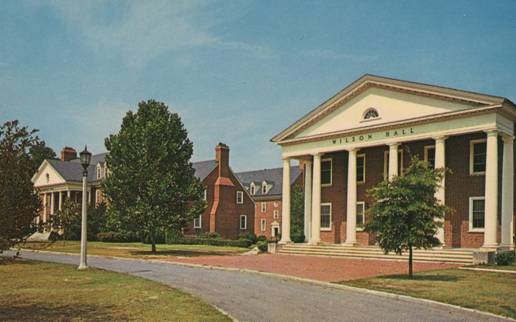
The original footprint of the University of Maryland Eastern Shore’s campus is on the National Register of Historic Places.
The “Academic Oval” is the ancestral heart of the institution that, when founded on Sept. 13, 1886, housed students, faculty and classrooms in a converted late-18th century farmhouse known as Olney.
Neither Olney nor other early wood-frame buildings that sprung up on the campus’ original 16 acres survive today. Some outlived their usefulness and were demolished, while fire destroyed others.
Nevertheless, their brick replacements are structures with a distinctive architectural theme that National Register researchers described when the “Oval” qualified for historic designation in 2005:
“The quadrangle is surrounded by major buildings (a majority of which were) erected between 1938 and 1954 (and) reflect variations of neoclassical and Colonial Revival style … favored by many educational institutions during the early-to-mid 20th century.”

“Several … buildings are distinguished by colossal columned entrance porticos reflecting the resurgence of neoclassicism during the first half of the 20th century.”
At one point, a paved driveway accessible to automobiles passed in front of the buildings, but was replaced in the late 20th century by a pedestrian-only brick promenade.
Buildings on the Oval are named in honor of historically prominent figures who had roles in the university’s or America’s history.
And in what may be one of the area’s smallest cemeteries; the graves of three former leaders of the institution and the spouse of one of them are part of the National Register designation.
Eight buildings on the Oval earned it National Register1 status:
- John T. Williams Hall2 (1940)
- (Portia & Benjamin) Bird Hall2 (1940)
- (John) Murphy Hall (1943) and annex (1964)
- (John A.B.) Wilson Hall (1949)
- Somerset Hall (1949)
- Harford Hall (1950)
- (Joseph R.S.) Waters Hall (1950)
- (Frank) Trigg Hall (1954)
Other buildings on the Oval are: George Washington Carver science building (1972), Benjamin Banneker hall (1959), Charles C. Spaulding hall (1963), Henry O. Tanner Airway Science Center (1963) and Frederick Douglass Library (1969).
UMES’ alumni magazine – the Oval Message – draws inspiration for its name from the 23.8-acre historic site.
1 – National Register of Historic Places report, August 2005.
2 – Built with funding from the Depression-era federal Works Progress Administration.

